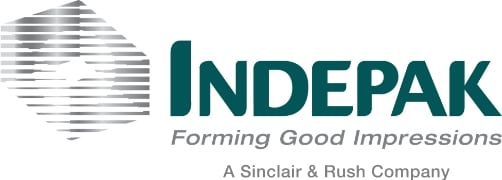If you are searching for a packaging company and not entirely sure what type of packaging you want or need, plastic thermoforming can be a good fit for virtually any type of company.
1. Plastic Thermoforming Offers Something For Every Industry
The team at Indepak has been designing plastic packaging, thermoform trays and thermoplastic products for more than 40 years. During these years, we have served virtually any industry imaginable, including pharmaceutical and medical firms, electronics companies, specialty food companies and too many retail manufacturers to name in this short blog post. Plastic thermoforming is so diverse that we can meet just about any specification you might have. For instance, some clients need plastics with anti-static properties while others may need plastics suitable for downstream sterilization, and still others might need plastics that have been approved to hold food products or beverages. With thermoplastics, it’s easy to find a great match.
2. There Is A Perfect Plastic For Everything
It doesn’t matter if your company makes cookies or power drills, there is a type of plastic ideal for use as packaging. Each type of plastic available for plastic thermoforming boasts unique chemical properties.
For instance, polypropylene (PP) is one type of thermoplastic we use. PP offers excellent resistant to weak acids, weak alkalis and strong alkalis. It is also quite heat resistant. Because of these special characteristics, it can be a good choice for reusable food containers that need to withstand the heat of the dishwasher and microwave. This is just one of many types of thermoplastics we can use for packaging or products. Our design team will consider the specifications for your unique product and match it to an ideal type of plastic.
3. Most Thermoplastics Are Recyclable
We also know that the thermoplastics used for those our water bottles are recyclable, but it might surprise you to learn that virtually all thermoplastics can be recycled and reused. While polyethylene terephthalate (PET) and high-density polyethylene are the two thermoplastics that are most commonly collected from our homes, that doesn’t mean that plastics such as PVC and LDPE cannot also be recycled. More and more recycling centers in the United States are accepting a larger range of thermoplastics, so be sure to check and see what types of plastics you can place in your recycling bins.
4. Recycling Transforms Thermoplastics Into An Array Of Products
While some of the plastics we use at our plastic thermoforming facility will be recycled and reused to make new packaging, this is not the only way recycled plastics are used. For instance, recycled plastics can be used to make everything from rugs to dinner plates. Even clothing can be created using thermoplastics, as well as your backyard patio furniture and the plastic playhouse or playground equipment your children enjoy using at the park.
5. We Can Make Plastics Out Of Starch
While you can recycle almost all commonly used thermoplastics, there are some options that are even more sustainable. At Indepak, we can use starch-based bioplastics to create some types of packaging. These plastics are created from renewable resources and are biodegradable. While these are not an option for all types of plastic thermoforming projects, they are a good choice for some food containers, cups and lids. This type of thermoplastic is known as PLA or polylactic acid. In the United States, corn starch is used to create PLA and, in other countries, other types of plants such as sugarcane or tapioca are used.
Not only can we make cups and containers out of PLA, this starch-based thermoplastic can be used to create items such as clothing, diapers, upholstery and even 3D printer filament. While PLA is biodegradable, it does need to be processed separately from the trash in your regular trash bin and the recyclables in your recycling bin. Specific conditions are needed in order for PLA to biodegrade quickly. If sent to a composting facility, it will take a few months for PLA to biodegrade as these facilities offer the ideal conditions for biodegradation of PLA. At the landfill, the PLA will biodegrade but the process will take a significantly longer period of time.
6. Plastic Thermoforming Saves Money
Using thermoplastics for your packaging is sure to be your most economical choice, and it’s not just because thermoplastics tend to be inexpensive materials. The material cost is certainly lower than many other options, but using plastic thermoforming also means that you will be producing very lightweight packaging. With shipping costs continuing to rise, using packaging that weighs very little just makes good economic sense. We also can create strong, protective packaging that fits the shape of your product exactly. This also can reduce the size of packaging, which also reduces weight and saves money.
If you need packaging or thermoplastic products, contact us today and we will get started on your unique plastic thermoforming project. Call 800-526-6273, email, or fill out our Contact Us form. A representative from our sales team quickly will get in touch with you to discuss your plastic thermoforming needs.





